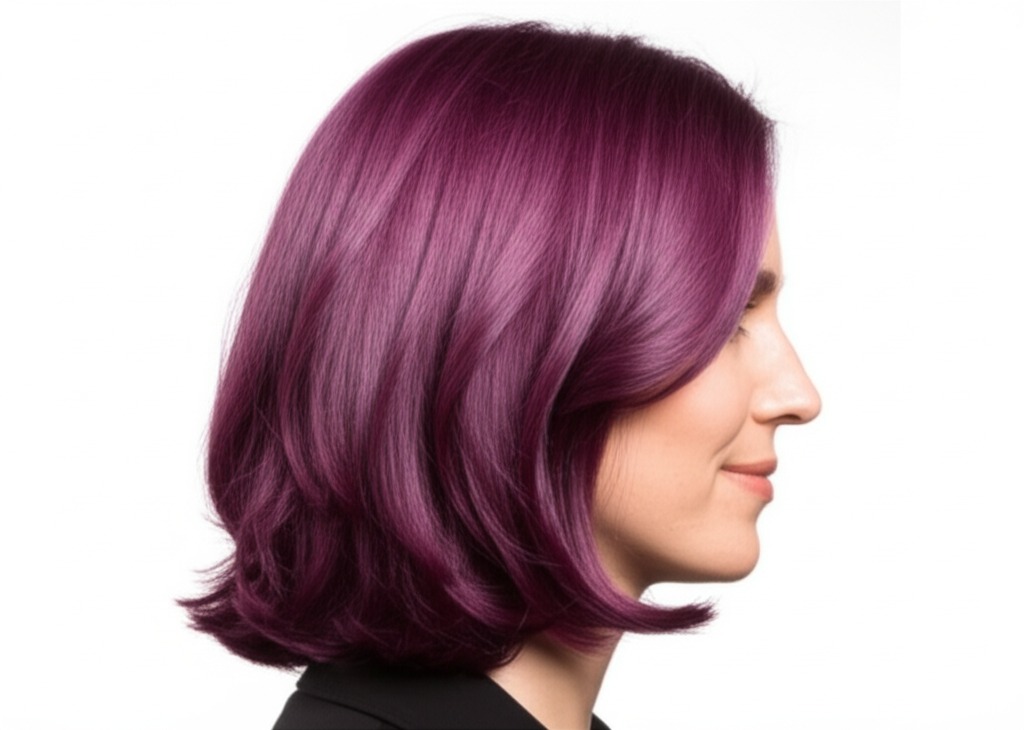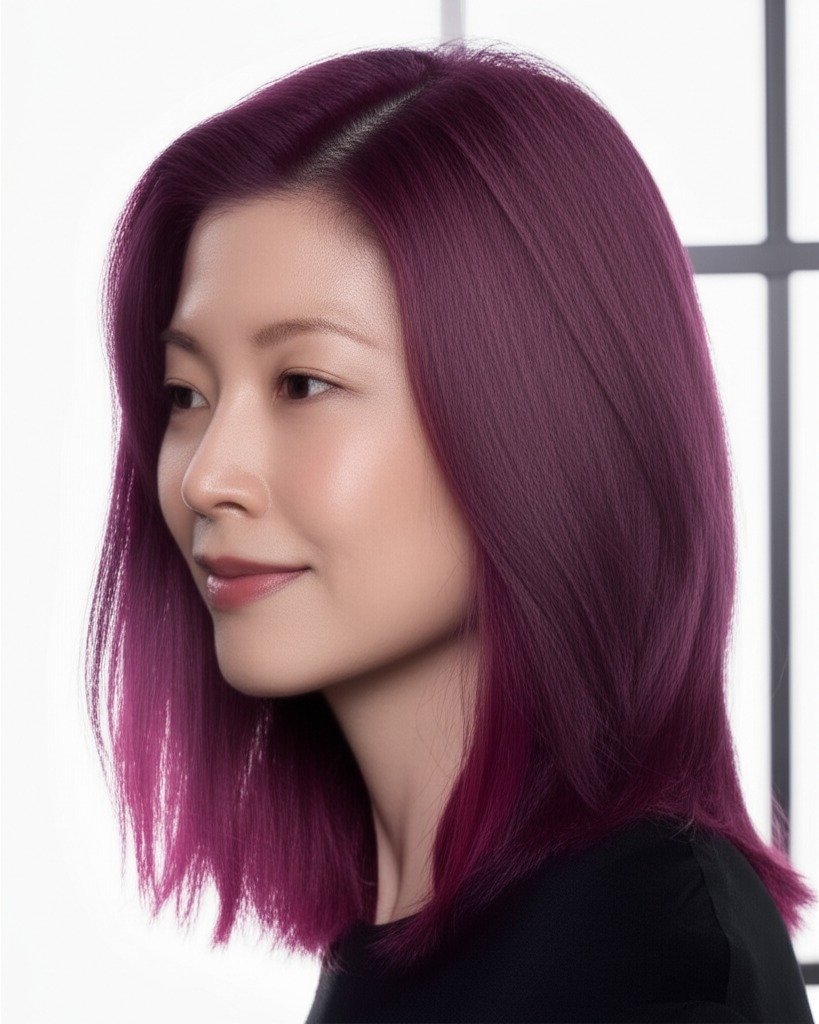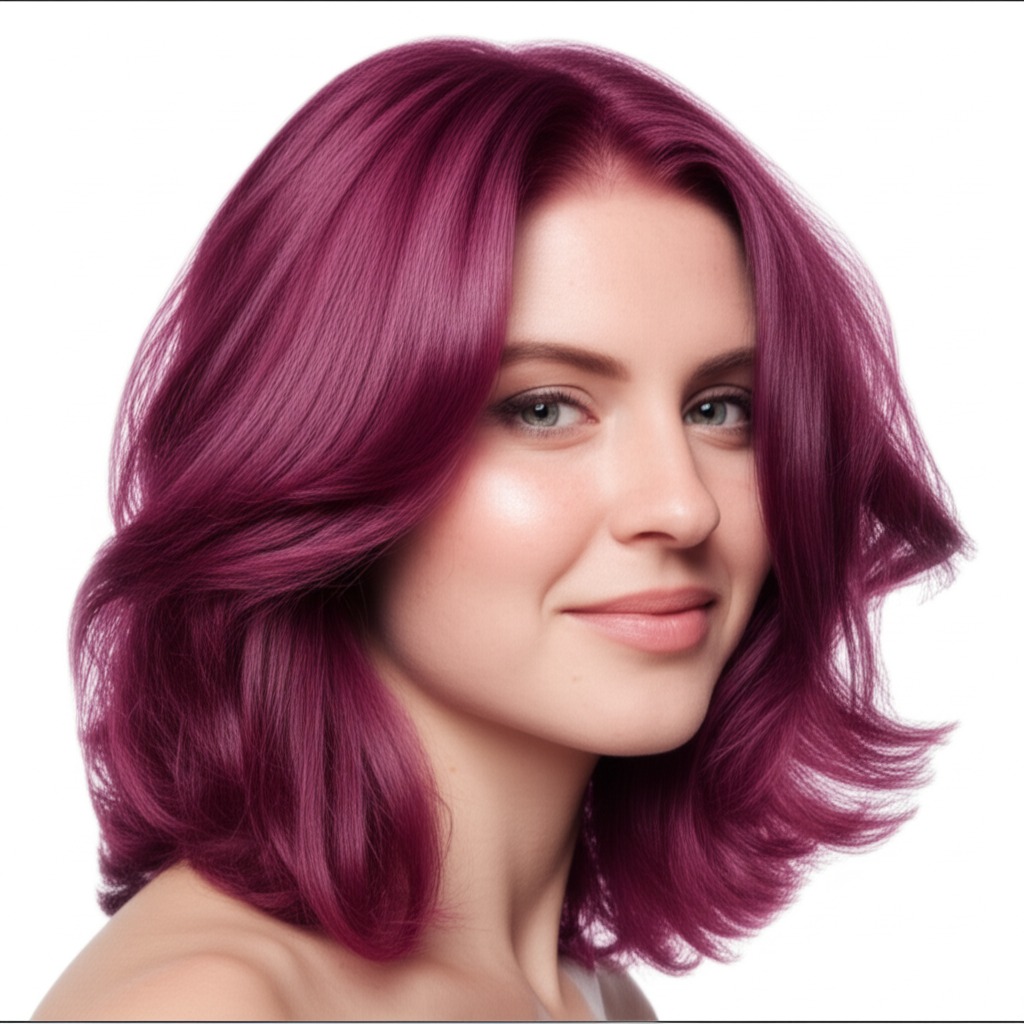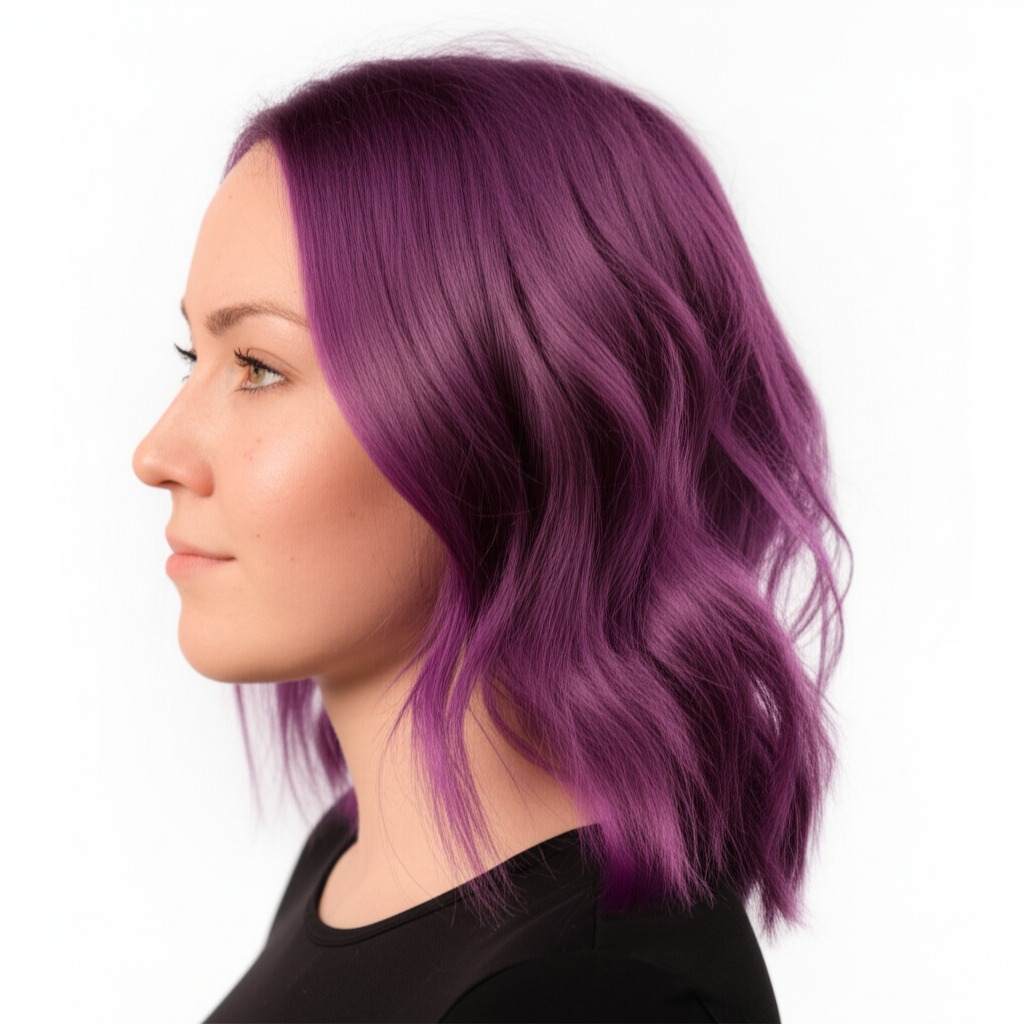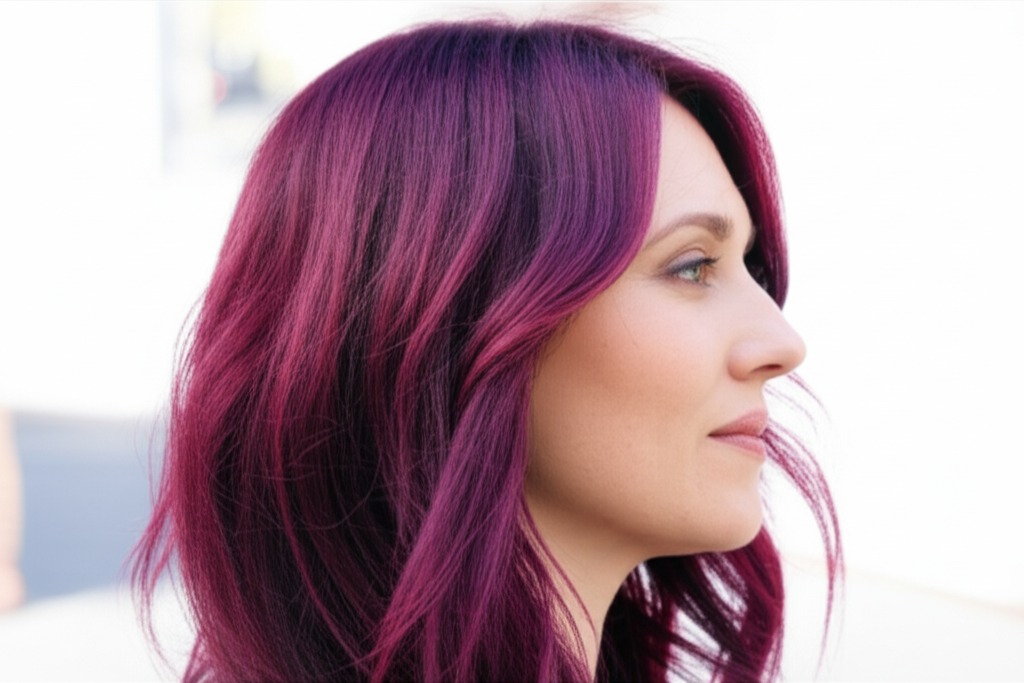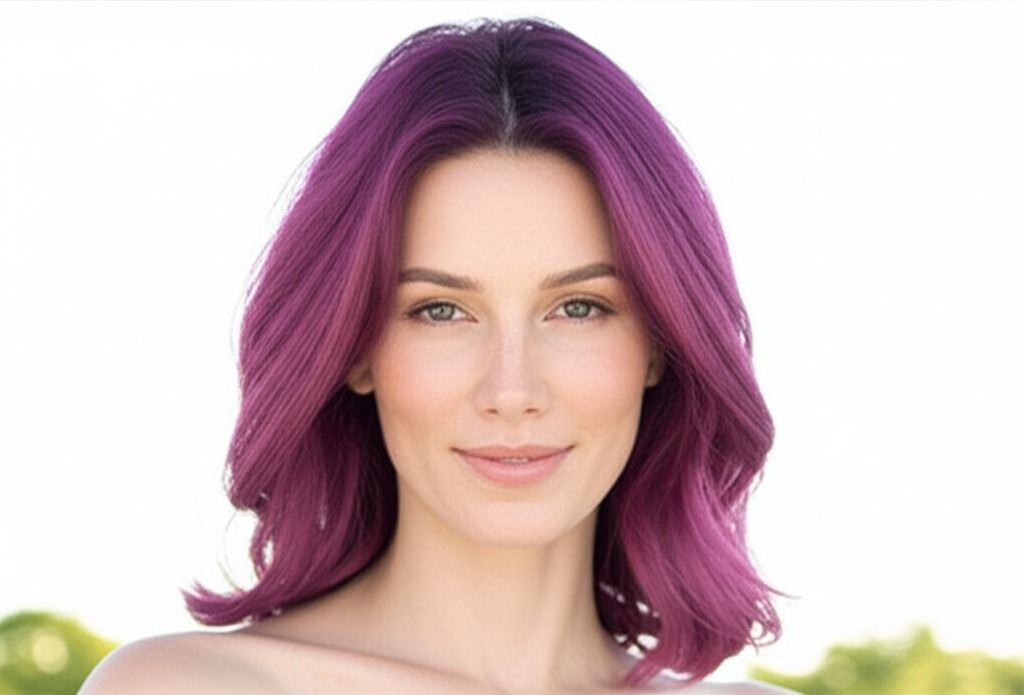#Dive into Deep Berry Beauty: The Mulberry Hair Color Trend
Mulberry hair is having a moment! This rich, captivating shade blends the depth of plum with hints of berry red – creating a look that’s both sophisticated and undeniably cool. But achieving the perfect mulberry isn't just about pointing at a picture in your salon chair. Let's break down everything you need to know to rock this gorgeous color beautifully.
#1. Understanding the Mulberry Shade: Depth & Undertone
Mulberry isn't one single shade; it’s a family of colors! Here’s what influences its look:
- Undertones: Most mulberry shades lean cool. This means they have hints of blue and purple, which creates that signature depth. While some variations can be more neutral (containing a touch of grey), truly warm mulberries are rare and often appear muddy.
- Depth/Levels: Hair color is measured on a level scale from 1-10, with 1 being the darkest black and 10 being the lightest blonde. Mulberry typically sits between levels 3-6, depending on how much lightness you want to incorporate:
- Level 3-4 (Deep Mulberry): A rich, dark berry shade – perfect for adding dimension without a drastic change. This is ideal if you're aiming for a subtle impact and have darker natural hair.
- Level 5-6 (Mid-Range Mulberry): The most common interpretation of the trend—a balanced blend of depth and brightness. It offers noticeable color while still feeling relatively low maintenance.
#2. Who Does Mulberry Flatter? Finding Your Perfect Match
Choosing a hair color is about more than just liking how it looks in a photo; it’s about complementing your natural features!
- Skin Tone & Undertone:
- Cool Skin Tones (Pink, Red, or Blue undertones): Mulberry really shines on cool skin. The coolness of the shade enhances your complexion and creates a harmonious look. Think fair porcelain skin with pink cheeks or olive skin with blueish undertones.
- Neutral Skin Tones: You can often pull off mulberry! Experimenting with different levels (lighter vs darker) is key to finding the right balance.
- Warm Skin Tones (Golden, Yellow, or Peach undertones): This is where things get tricky. A true cool-toned mulberry can clash and make your skin appear sallow. If you have warm undertones, a slightly more neutral mulberry with hints of grey might work – but discuss this thoroughly with your stylist!
- Eye Color: Mulberry complements almost any eye color:
- Blue Eyes: The contrast is striking and beautiful.
- Green Eyes: The berry tones enhance the green’s natural vibrancy.
- Brown Eyes: Mulberry adds depth and richness, making brown eyes appear even more captivating.
- Natural Level Starting Point: Mulberry works best with a base that's already relatively dark.
- Levels 1-3 (Dark Brown/Black): You’ll likely need to lighten your hair several levels for the color to show up properly – be prepared for multiple salon visits and potentially more damage.
- Levels 4-6 (Medium Brown): This is a sweet spot! Less lightening is required, making it easier on your hair's health.
- Levels 7+ (Light Brown/Dark Blonde): Achieving a true mulberry will be difficult and likely require significant toning to counteract any brassiness or yellow tones.
#3. Technique Options: From Subtle Shift to Statement Color
The application technique drastically impacts the final result.
- Single-Process: A uniform color applied from root to tip, best for achieving a solid, deep mulberry look on darker bases (levels 4-6).
- Highlights/Lowlights: Adding lighter or darker strands creates dimension and movement. Subtle highlights can brighten the overall shade; lowlights add depth.
- Babylights: Very fine, delicate highlights that mimic natural sun-kissed hair. Creates a soft, blended effect – good for those wanting a subtle change.
- Gloss/Toner: Used after coloring to refine the tone and boost shine. Essential for achieving the perfect mulberry hue and neutralizing unwanted brassiness.
- Balayage-Effect vs Solid Color: Balayage (hand-painted highlights) creates softer, more natural-looking color transitions than a solid application. It's great for low maintenance as the roots grow out seamlessly. A solid color gives a bolder, more uniform look.
#4. Maintenance & Longevity: Planning Your Hair Journey
Mulberry isn’t “set it and forget it.” Consistent care is key to keeping your shade vibrant.
- Wash Frequency: Aim for 2-3 washes per week using sulfate-free shampoo (more on that in the At-Home Care section).
- Toner Refresh: Expect to tone every 4-8 weeks, depending on how quickly your color fades and your hair's porosity. Toner keeps the cool undertones from shifting towards red or orange.
- Root Growth Pacing: Discuss with your stylist how frequently you’ll need root touch-ups. If you go for a balayage effect, this will be less frequent than if you opt for a solid color.
- Budget/Time Planning: Mulberry is considered moderately high maintenance. Budget $150-$400+ per salon visit (depending on location and stylist) and allocate 2-4 hours for appointments.
#5. Seasonality & Pairing with Cuts: Embracing the Trend Year-Round
Mulberry’s versatility allows it to shine in any season!
- Bob/Lob: The rich color looks incredibly chic with a blunt bob or long lob, highlighting its sleekness and sophistication.
- Long Layers: Adds depth and movement – perfect for showcasing the dimension of the mulberry shade.
- Pixie Cut: A bold choice! Mulberry on a pixie cut is edgy and confident.
- Seasonal Tweaks: In winter, embrace deeper, richer tones. For summer, consider adding subtle highlights to brighten the color.
- Event/Occasion Picks:
- Work: A deep mulberry (level 3-4) offers a professional yet stylish look.
- Daytime: A mid-range mulberry (level 5-6) is perfect for everyday wear.
- Evening: Amp up the shine with glossing treatments and embrace bolder highlights.
- Weddings: A soft, blended balayage effect creates a romantic and ethereal vibe.
#6. At-Home Care: Protecting Your Investment
Proper at-home care is crucial for color longevity!
- Sulfate-Free Shampoo: Sulfates strip hair of its natural oils and fade color quickly. Invest in a sulfate-free shampoo specifically designed for colored hair.
- Clarifying Cadence: While sulfates are out, buildup can still happen. Use a clarifying shampoo every 4-6 weeks to remove product residue (follow with a deep conditioner).
- Heat Protection: Heat styling damages color and dries out hair. Always use a heat protectant spray before using any hot tools.
- Color-Safe Styling Tips: Opt for gentle styling products designed for colored hair. Avoid harsh chemicals and excessive sun exposure.
- Product Checklist: Sulfate-free shampoo, conditioner, deep conditioning mask, heat protectant spray, color-safe styling products (serums, creams).
#7. Common Pitfalls: Avoiding Color Mishaps
Let's prevent those frustrating surprises!
- Brassiness: Cool tones can fade to orange or brassy hues. Regular toning is essential.
- Banding: Uneven color application – often caused by improper lightening techniques. Choose a skilled stylist who understands hair coloring principles.
- Patchiness: Especially on darker bases, uneven lifting during the lightening process can result in patchy color. A strand test is always recommended.
#8. Pros & Cons: Weighing Your Options
Pros:
- Versatile: Works with various cuts and styles.
- Sophisticated: A timelessly chic color choice.
- Complimentary to Many Skin Tones (with the right variation).
Cons:
- Maintenance Burden: Requires regular toning and root touch-ups.
- Fade Risk: Cool tones tend to fade faster than warm ones.
- Potential for Damage: Lightening can damage hair, especially on darker bases.
#9. Salon Consultation Script: Setting Expectations
Before you commit, have an open conversation with your stylist! Here are some prompts:
- "I'm interested in a mulberry color – what level do you think would work best for my skin tone and natural hair color?"
- "Can we discuss the potential damage from lightening my hair? What steps can be taken to minimize it?"
- “What’s your experience with achieving cool-toned colors on [my skin tone/hair type]?”
- "How often will I need to come in for touch-ups and toning?"
- "Can we do a strand test before applying the color all over my head?"
#10. FAQs: Your Mulberry Questions Answered
- Can I achieve mulberry on dark brown hair without significant damage? It's possible, but will require lightening. Discuss with your stylist about minimizing damage through gentler techniques and prioritizing hair health.
- Is there a permanent version of mulberry color? Most salon colors are demi-permanent or semi-permanent, meaning they gradually fade. Permanent options exist but can be more damaging.
- Will my hair turn purple if I wash it with hard water? Hard water can cause mineral deposits that alter the color, making it appear duller or even slightly purple in extreme cases. A chelating shampoo can help remove these deposits.
- How long will mulberry last before needing a touch-up? Generally 6-8 weeks for root touch-ups and 4-8 weeks for toner refreshes.
- Can I tone my hair at home between salon visits? Yes, but proceed with caution! Improper toning can lead to unwanted color shifts or damage. Follow product instructions carefully.
- What if my mulberry turns too red? This often means the cool tones have faded and are revealing underlying warmth. A blue-violet toner will help neutralize the redness.
Embrace the berry beauty of mulberry hair – with careful planning, expert styling, and consistent care, you'll rock this stunning shade for months to come!

